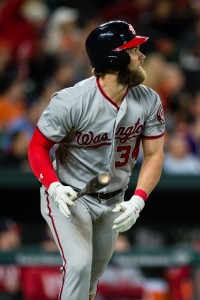Here are the day’s minor moves, all by way of Baseball America’s Matt Eddy unless otherwise noted:
- Jake Kaplan of the Houston Chronicle reports that the Astros have released Triple-A righty Keegan Yuhl and Double-A lefty Michael Freeman (Twitter links). Yuhl, 25, had a solid Double-A season in 2016 but has been torched for 58 earned runs in 46 Triple-A innings since being promoted on the heels of his strong Double-A output last year. Freeman, also 25, had a seemingly encouraging 3.15 ERA with Double-A this year but walked 16 batters (against 14 strikeouts), hit three more and threw three wild pitches in just 20 innings. He was Houston’s seventh-round pick as recently as 2015.
Earlier Moves
- The Diamondbacks have released veteran lefty Brian Matusz. Once a fixture in the Orioles’ pen, Matusz has struggled to regain his footing over the past two seasons. He was hit hard in nine MLB frames last year and was off to a rough start with the D-backs organization. Through 17 2/3 innings at Triple-A, he carried a 6.11 ERA with 6.6 K/9 and 2.5 BB/9.
- The Padres also released first baseman/outfielder Jamie Romak, among a few others. The 31-year-old has seen brief MLB time in two seasons, then struggled badly last year in a short stint in Japan. He was, however, off to quite a nice start at Triple-A, with a .347/.392/.800 slash and 11 home runs over 102 plate appearances.
- First baseman Ben Paulsen was given his release by the Twins, Mike Berardino of the St. Paul Pioneer-Press reports on Twitter. The 29-year-old, who slashed a Coors Field-aided .271/.316/.446 over the past three MLB seasons, was hitting .230/.278/.432 with three home runs over 79 Triple-A plate appearances.
- Meanwhile, the Twins added righty Kam Mickolio, the 33-year-old reliever who has been pitching in Japan since wrapping up a brief MLB career. The towering hurler generated excellent results in the NPB, with 208 1/3 innings of 2.42 ERA ball and 6.5 K/9 against 2.6 BB/9.
- The Orioles cut ties with third baseman Juan Francisco. Still just 29 years of age, the six-year MLB veteran hasn’t seen the majors since 2014 — which is also the last year in which he accumulated any playing time with an affiliated organization. Over 1,091 total trips to the plate in the majors, he owns a .236/.297/.439 slash with 48 long balls.
- Righty Erik Cordier was released by the Red Sox, who signed him after a stint last year in Japan. Cordier, 31, has seen the majors briefly but went to the Orix Buffaloes for the 2016 campaign. He managed only a 7.30 ERA through 12 1/3 innings there. His early work at Triple-A Pawtucket in the current season was somewhat interesting. Through 8 1/3 innings, Cordier has allowed five earned runs on just four hits, with 15 strikeouts against nine walks.
- The Nationals have parted ways with 2013 second-rounder Jake Johansen, according to Chelsea Janes of the Washington Post (via Twitter). Johansen, 26, had reached Double-A for this first time this year. Through 11 2/3 innings, he had permitted eight earned runs on 11 hits and eight walks while recording 13 strikeouts.
- The Royals have released righty Evan Beal, according to MLB.com’s Jeffrey Flanagan (via Twitter). The former eighth-round draft pick had been working at Double-A, where he owned a 5.40 ERA through 15 innings with 5.4 K/9 against 1.2 BB/9.
- The Giants reached a minors deal with righty Collin Balester. The 30-year-old appeared briefly last year in the Korea Baseball Organization’s Samsung Lions. His most recent affiliated action came in 2015, when he posted solid results in the upper minors but struggled to a 7.47 ERA over 15 2/3 MLB innings.

